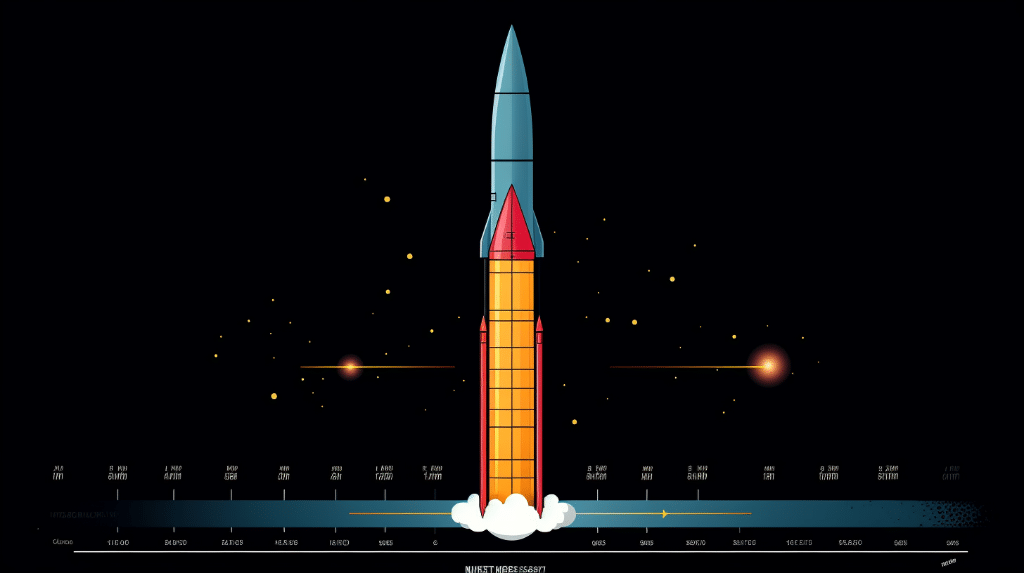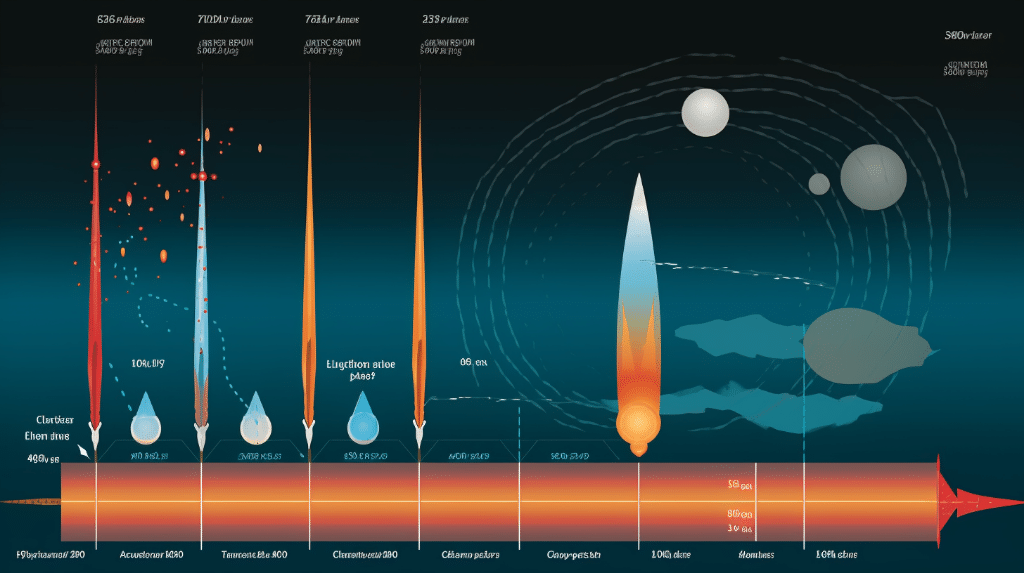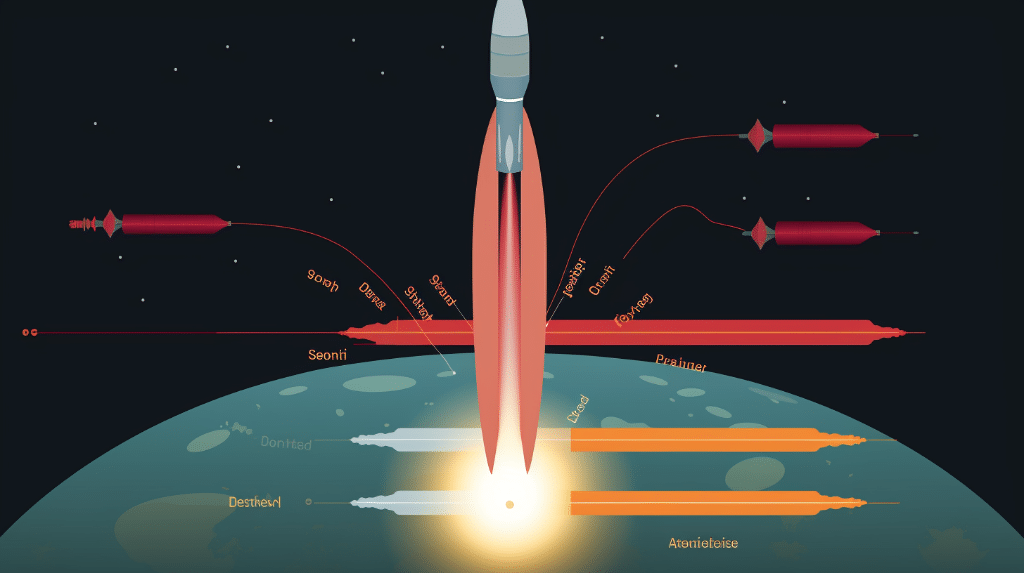How to Calculate Mass from Force
In physics, understanding the relationship between mass and force is essential. By knowing how to calculate mass from force, we can analyze the behavior of objects and predict their motion accurately. In this blog post, we will explore various scenarios and formulas that will enable us to calculate mass using different factors such as force, acceleration, gravity, and distance.
Understanding the Basic Concepts
Before we dive into the calculations, let’s define the basic concepts of mass and force.
-
Definition of Mass:
Mass is a fundamental property of matter that measures the amount of substance in an object. It determines an object’s resistance to changes in its motion or acceleration. Mass is typically measured in kilograms (kg). -
Definition of Force:
Force, on the other hand, is an external influence that can change an object’s motion. It can cause an object to accelerate, decelerate, or change direction. Force is measured in Newtons (N).
The Relationship Between Mass, Force, and Acceleration

To understand how mass and force are related, we need to explore Newton’s Second Law of Motion and the formula F=ma.
- Newton’s Second Law of Motion:
Newton’s Second Law states that the acceleration of an object is directly proportional to the net force applied to it and inversely proportional to its mass. Mathematically, it can be expressed as:
![]()
Where:
– F represents the net force applied to the object (in Newtons).
– m represents the mass of the object (in kilograms).
– a represents the resulting acceleration of the object (in meters per second squared).
- The Formula F=ma:
This formula allows us to calculate the force acting on an object when the mass and acceleration are known. It can also be rearranged to calculate the mass when the force and acceleration are given. The formula is as follows:
![]()
By rearranging the formula, we can calculate the mass of an object by dividing the force acting on it by its acceleration.
Now that we have a clear understanding of the basic concepts and the formula involved, let’s move on to calculating mass from force in different scenarios.
How to Calculate Mass from Force and Acceleration
Step-by-Step Guide

To calculate the mass of an object given the force and acceleration, follow these steps:
-
Identifying the Given Variables:
Determine the force acting on the object (F) and the resulting acceleration (a). Make sure the units are consistent (Newton for force and meters per second squared for acceleration). -
Applying the Formula:
Plug in the values of force (F) and acceleration (a) into the formula and perform the calculation. The result will be the mass of the object.
and perform the calculation. The result will be the mass of the object.
Worked Out Examples
Let’s work through a couple of examples to solidify our understanding.
Example 1: Calculating Mass with Known Force and Acceleration
Suppose we have an object being pushed with a force of 10 N and experiencing an acceleration of 5 m/s². What is the mass of the object?
By using the formula ![]() , we can calculate the mass:
, we can calculate the mass:
![]()
Simplifying the equation, we find that the mass of the object is 2 kg.
Example 2: Calculating Mass with Resultant Force and Acceleration
Now, let’s consider a situation where an object is subjected to a resultant force of 40 N, causing it to accelerate at a rate of 8 m/s². What is the mass of the object?
Using the formula ![]() , we can determine the mass:
, we can determine the mass:
![]()
After simplifying the equation, we find that the mass of the object is 5 kg.
By following these step-by-step instructions and using the formula ![]() , we can easily calculate the mass of an object when the force and acceleration are known.
, we can easily calculate the mass of an object when the force and acceleration are known.
In the next section, we will explore how to calculate mass from force and gravity.
How to Calculate Mass from Force and Gravity
Understanding the Concept of Gravity
Gravity is a fundamental force that attracts objects toward each other. It plays a crucial role in calculating mass, as it can influence the weight of an object.
-
Definition of Gravity:
Gravity is the force of attraction between two objects with mass. On Earth, gravity pulls objects towards the center of the planet. -
The Role of Gravity in Calculating Mass:
When we calculate mass from force and gravity, we are essentially determining the weight of an object, as weight is the force exerted on an object due to gravity. Weight is given by the formula:
![]()
Where:
– W represents the weight of the object (in Newtons).
– m represents the mass of the object (in kilograms).
– g represents the acceleration due to gravity, which is approximately 9.8 m/s² on Earth.
Step-by-Step Guide
To calculate the mass of an object given the force and gravity, follow these steps:
-
Identifying the Given Variables:
Determine the force acting on the object (F) and the acceleration due to gravity (g). Ensure the units are consistent (Newton for force and meters per second squared for acceleration). -
Applying the Formula:
Plug in the values of force (F) and the acceleration due to gravity (g) into the formula and solve for the mass (m).
and solve for the mass (m).
Now, let’s dive into some worked-out examples to grasp the concept better.
Worked Out Examples
Example 1: Calculating Mass with Known Force and Gravity
Suppose we have an object experiencing a force of 50 N due to gravity. What is the mass of the object?
Using the formula ![]() , we can calculate the weight of the object. Since weight is equal to force, we have:
, we can calculate the weight of the object. Since weight is equal to force, we have:
![]()
Since we know that the acceleration due to gravity is approximately 9.8 m/s², we can rearrange the formula to solve for mass:
![]()
Evaluating the equation, we find that the mass of the object is approximately 5.1 kg.
Example 2: Calculating Mass on Different Planets
Let’s explore how to calculate the mass of an object on a different planet. Suppose an object has a weight of 60 N on a planet where the acceleration due to gravity is 20 m/s². What is the mass of the object on this planet?
Using the formula ![]() , we can rearrange the equation to solve for mass:
, we can rearrange the equation to solve for mass:
![]()
Substituting the given values, we have:
![]()
Computing the equation, we find that the mass of the object on this planet is 3 kg.
By following these step-by-step instructions and applying the formula ![]() , we can easily calculate the mass of an object when the force and gravity are known.
, we can easily calculate the mass of an object when the force and gravity are known.
In the next section, we will delve into calculating mass from force and distance.
How to Calculate Mass from Force and Distance
Understanding the Concept of Distance in Physics
In physics, distance refers to the amount of space between two points, typically measured in meters (m). Distance is a crucial factor when calculating mass, as it can affect the force exerted on an object.
-
Definition of Distance:
Distance is the measurement of the space between two points in a physical system. -
The Role of Distance in Calculating Mass:
Distance plays a key role in determining the work done on an object, which is equal to the force exerted on the object multiplied by the distance it moves. The formula for work in this scenario is given by:
![]()
Where:
– W represents the work done on the object (in Joules).
– F represents the force acting on the object (in Newtons).
– d represents the distance the object moves (in meters).
Step-by-Step Guide
To calculate the mass of an object given the force and distance, follow these steps:
-
Identifying the Given Variables:
Determine the force acting on the object (F) and the distance it moves (d). Ensure the units are consistent (Newton for force and meters for distance). -
Applying the Formula:
Plug in the values of force (F) and distance (d) into the formula . Calculate the work done on the object.
. Calculate the work done on the object.
Now, let’s explore a couple of examples to solidify our understanding.
Worked Out Examples
Example 1: Calculating Mass with Known Force and Distance
Let’s say we have an object subjected to a constant force of 20 N, causing it to move a distance of 5 meters. What is the mass of the object?
Using the formula ![]() , we can calculate the work done on the object. Since work is equal to the force multiplied by the distance, we have:
, we can calculate the work done on the object. Since work is equal to the force multiplied by the distance, we have:
![]()
Simplifying the equation, we find that the work done on the object is 100 J.
Since we know that work is equal to the force multiplied by the distance, we can rearrange the formula to solve for mass:
![]()
Substituting the known values, we have:
![]()
Evaluating the equation, we find that the mass of the object is 20 kg.
Example 2: Calculating Mass in Different Scenarios
Now, let’s consider a scenario where an object is acted upon by a force of 30 N and moves a distance of 10 meters. What is the mass of the object?
Using the formula ![]() , we can first calculate the work done on the object:
, we can first calculate the work done on the object:
![]()
Simplifying the equation, we find that the work done on the object is 300 J.
By rearranging the formula ![]() , we can solve for the mass:
, we can solve for the mass:
![]()
After evaluating the equation, we find that the mass of the object is 30 kg.
By following these step-by-step instructions and applying the formula ![]() , we can calculate the mass of an object when the force and distance are known.
, we can calculate the mass of an object when the force and distance are known.
In the next section, we will explore how to calculate mass without force.
How to Calculate Mass without Force
Understanding the Concept of Mass without Force
In certain situations, we may need to calculate the mass of an object without having direct information about the force acting on it. Fortunately, there are other variables that we can utilize to determine the mass.
- The Role of Other Variables in Calculating Mass:
When force is unknown, we can still use other variables such as momentum, kinetic energy, or gravitational potential energy to calculate the mass of an object. These variables are dependent on mass and other known quantities.
To calculate mass without force, we need to consider the specific scenario and select an appropriate formula. Let’s explore a general step-by-step guide to calculating mass without force.
Step-by-Step Guide
To calculate the mass of an object without knowing the force, follow these steps:
-
Identifying the Given Variables:
Determine the known variables in the given scenario. These can include factors such as momentum, kinetic energy, or gravitational potential energy. -
Applying the Formula:
Select the appropriate formula based on the known variables and rearrange it to solve for mass. Depending on the scenario, you may need to refer to specific formulas related to momentum, kinetic energy, or potential energy.
Now, let’s work through a couple of examples to illustrate how to calculate mass without force.
Worked Out Examples
Example 1: Calculating Mass without Known Force
Suppose we have an object with a momentum of 25 kg·m/s. The force acting on the object is unknown. What is the mass of the object?
To calculate the mass without knowing the force, we can use the formula for momentum:
![]()
Rearranging the formula, we can solve for mass:
![]()
Substituting the given values, we have:
![]()
Since the velocity (v) is unknown, we cannot determine the mass in this scenario without additional information.
Example 2: Calculating Mass in Different Scenarios
Let’s consider a scenario where an object has a kinetic energy of 100 J but the force acting on it is unknown. What is the mass of the object?
The formula for kinetic energy is:
![]()
Rearranging the formula, we can solve for mass:
![]()
Substituting the given values, we have:
![]()
Without the value of velocity (v), we cannot determine the mass in this scenario.
By following this step-by-step guide and selecting the appropriate formula for the given variables, we can calculate the mass of an object even without knowing the force.
In this blog post, we explored the various methods of calculating mass from force. We started by understanding the basic concepts of mass and force, followed by exploring the relationship between mass, force, and acceleration using Newton’s Second Law of Motion. We then delved into calculating mass from force and acceleration, force and gravity, force and distance, and even without knowing the force. Throughout the post, we provided step-by-step instructions and worked-out examples to ensure a thorough understanding of the calculations involved.
Understanding how to calculate mass from force is crucial in physics and allows us to analyze and predict the behavior of objects. By mastering these calculations, you will be well-equipped to tackle a wide range of physics problems. Remember to practice these calculations regularly to reinforce your understanding and build confidence in your skills.
So, keep practicing, stay curious, and embrace the wonders of physics!
How can the concept of calculating mass from force be related to the process of calculating mass from weight?
Calculating mass from weight: step-by-step is an essential process in understanding the relationship between force and weight. To bridge the gap between these concepts, it is necessary to explore how force and weight are interconnected. The article Calculating mass from weight: step-by-step. provides a comprehensive explanation of the process, highlighting the significance of weight in determining mass. By understanding the relationship between force, weight, and mass, it becomes clear how these two topics intersect and contribute to a deeper understanding of physics.
Numerical Problems on how to calculate mass from force

Problem 1:
A force of 20 N is applied to an object, causing it to accelerate at a rate of 5 m/s². Calculate the mass of the object.
Solution:
We can use Newton’s second law of motion to solve this problem. Newton’s second law states that the force acting on an object is equal to the mass of the object multiplied by its acceleration.
So, we have:
![]()
where:
– ![]() is the force (given as 20 N),
is the force (given as 20 N),
– ![]() is the mass (to be determined), and
is the mass (to be determined), and
– ![]() is the acceleration (given as 5 m/s²).
is the acceleration (given as 5 m/s²).
Now, let’s solve for the mass:
![]()
Therefore, the mass of the object is 4 kg.
Problem 2:
An object of mass 2 kg accelerates at a rate of 10 m/s². Calculate the force acting on the object.
Solution:
Again, we’ll use Newton’s second law of motion to solve this problem. Rearranging the equation, we have:
![]()
where:
– ![]() is the force (to be determined),
is the force (to be determined),
– ![]() is the mass (given as 2 kg), and
is the mass (given as 2 kg), and
– ![]() is the acceleration (given as 10 m/s²).
is the acceleration (given as 10 m/s²).
Substituting the given values, we get:
![]()
Therefore, the force acting on the object is 20 N.
Problem 3:
An object with a mass of 5 kg experiences a force of 25 N. Calculate the acceleration of the object.
Solution:
Once again, we’ll use Newton’s second law of motion. Rearranging the equation, we have:
![]()
where:
– ![]() is the force (given as 25 N),
is the force (given as 25 N),
– ![]() is the mass (given as 5 kg), and
is the mass (given as 5 kg), and
– ![]() is the acceleration (to be determined).
is the acceleration (to be determined).
Substituting the given values, we have:
![]()
To solve for ![]() , we can rearrange the equation:
, we can rearrange the equation:
![]()
Therefore, the acceleration of the object is 5 m/s².
Also Read:
- How to find kinetic energy with mass and height
- How to calculate mass from gravitational force
- How to calculate friction force without mass
- Rotational kinetic energy of a point mass
- Is mass an extensive property
- Magnetic force and mass
- How to find potential energy with height and mass
- Does mass affect potential energy
- How to find mass in centripetal force
- Conservation of mass
Hi,
I am Rabiya Khalid, I have completed my masters in Mathematics. Article writing is my passion and I have been professionally writing for more than a year now. Being a science student, I have a knack for reading and writing about science and everything related to it.
In my free time, I let out my creative side on a canvas.